Juniper virginian "Hetz"
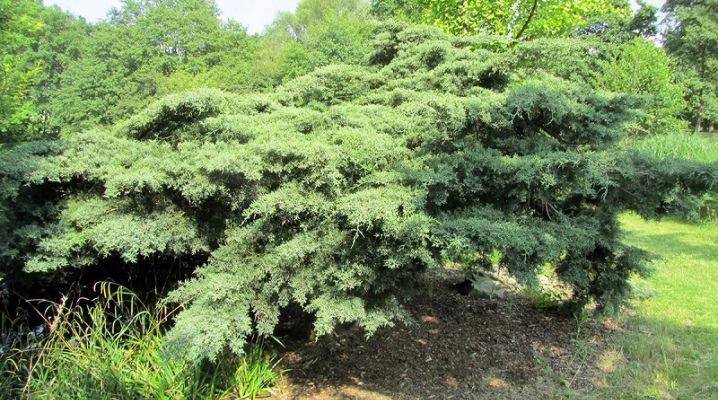
With the growing popularity of landscape design, the demand for various ornamental shrubs and trees began to grow. Often in country houses, instead of a fence, thuja fences are used, but this will surprise few people.
Currently, you can find in the decoration of the garden such a shrub as juniper, which has a bright coniferous aroma.
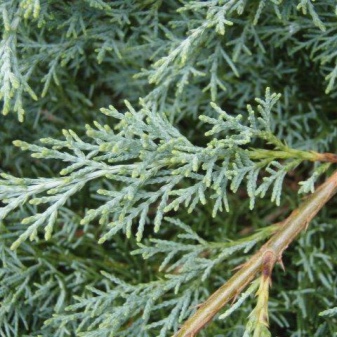
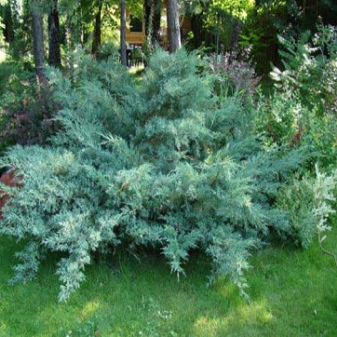
Short description
Virginia juniper, depending on the variety, can be either a low-growing shrub or a tree. Currently, there are about 70 varieties of juniper. Under natural conditions, this plant can be mainly seen in rocky areas, in rare cases in swampy areas. The homeland of this shrub is North America. Juniper is a member of the cypress family. It belongs to evergreens and is a shrub up to 2.5 meters high, and the crown diameter reaches 4 meters. Juniper is a fast growing plant and can grow up to 30 centimeters per year. Due to such a large increase, the shrub must be constantly cut to form the necessary crown.
The bushes have the most active growth for the first 9 years, then it slows down and is about 10 centimeters per year. This type of shrub belongs to undersized plants. The shrub has a gray-blue color and a pronounced coniferous aroma. The initial appearance of the crown is scaly, then it becomes, like all conifers, needle-like. The ends of the needles are not sharp. The fruits of this plant are toxic, so they should not be harvested.
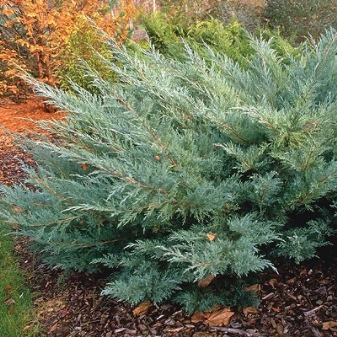
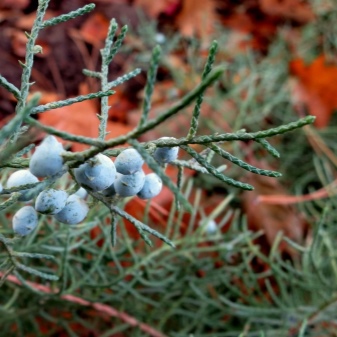
Features of the variety
This type of shrub is preferable to plant in direct sunlight or in partial shade, because due to planting in places where the sun does not get, it can lose its natural color. The soil for juniper should not be compacted; loose soil is the best option. In the cold season, it is better to tie the branches of the plant together, since they can break due to strong wind or snow.
An amazing feature of the Hetz juniper is its blue fruit, which looks like small cones. The plant is perennial, and can grow up to 40 years, and then it begins to dry out.
The recommended acidity of the soil for planting is slightly acidic or neutral.
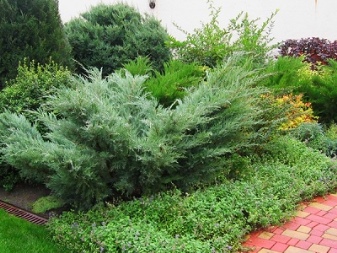
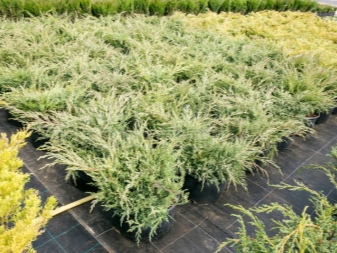
Pros of the variety:
- unpretentious in the choice of soil;
- well accepted in urban environments;
- resistant to pests;
- growing rapidly;
- three types of reproduction;
- retains its shape for a long time after cutting.
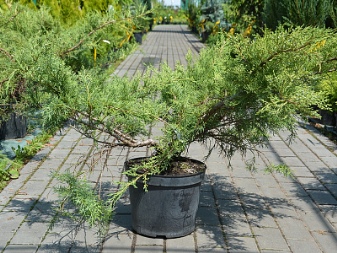
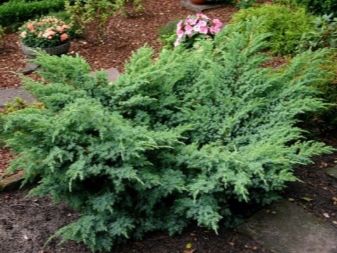
Landing rules
To choose the right seedling, you need to pay attention to the following points:
- shrub age from two years;
- no damage to the root system and the presence of dry areas;
- no cracks in the bark;
- the presence of needles on the branches.
When buying this variety of juniper, it is better to pay attention to seedlings in pots, so you can immediately plant the plant after purchase. The best time to plant is May, April or October. If the plant has a closed root system, planting is possible at any time of the year, except for the winter period.
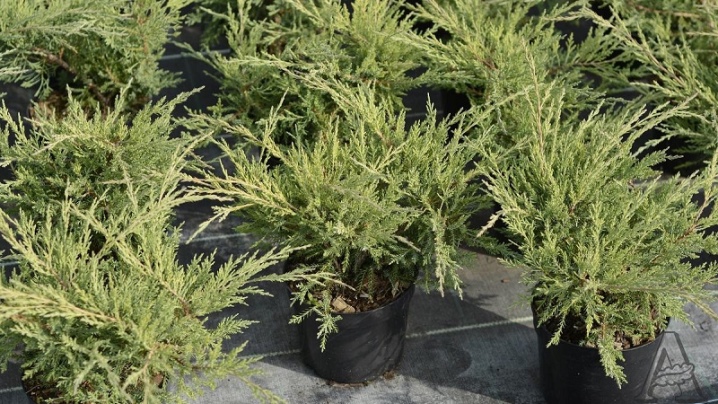
With an open root system, before planting, it is advisable to disinfect the root in a solution of potassium permanganate and place it in growth stimulants. It is recommended to plant immediately in the place of permanent growth.It is better to use an earthen lump when planting, with which the shrub was sold, and try, if possible, to immediately create the necessary landscape composition, since it is not recommended to replant the juniper.
For planting shrubs, the place should be prepared in advance. First you need to prepare a nutrient mixture, for which peat, sand and garden soil are mixed. The planting pit should be at least 60 centimeters deep and about 15 centimeters wide. It is better to create drainage, for this, pebbles or broken brick are laid out on the bottom of the landing site. The day before planting, it is recommended to fill the pit with water. For mass planting, the distance between the shrubs is left at 1.2-1.5 meters.
An important point is that the root collar is not immersed in the soil.


Watering
After planting, a young plant requires proper care and watering. At first, the shrub requires constant watering for stable growth. It usually lasts for three months.

Care
After you have planted the plant, it is necessary to mulch the trunk circle, for example:
- peat;
- bark of trees;
- dry leaves.
This is done in order to retain moisture in the soil and prevent weeds. Usually, this layer is increased by autumn, and a new composition is made every spring. Such care is necessary only for young plants, already more mature shrubs can only be moistened by rains. In case of drought, the crown of the bush is sprayed with cold water to increase the humidity of the air. This must be done in the evenings so that the crown of the juniper does not burn out in the sun.


Pruning
A young plant up to two years old, does not require special pruning; dry or broken branches are usually cut in the spring. Already from the age of three years, you can begin to shape the crown, supporting it every spring.
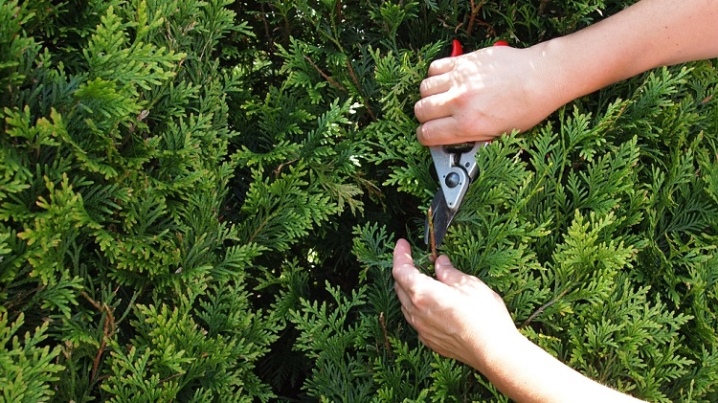
Preparing for winter
Due to the fragility of the branches in the autumn, a frame is installed and the branches are tied.
For young plants, the following is carried out:
- increase the layer of mulch;
- spud;
- branches are connected;
- covered with polyethylene;
- covered with snow.
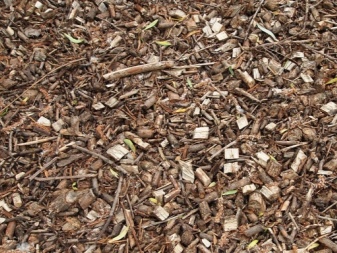
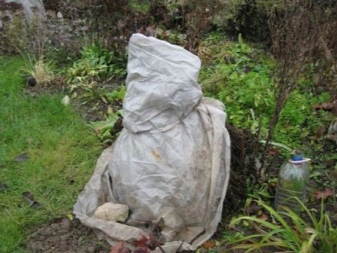
Since the shrub does not tolerate strong temperature changes in the spring, an adult plant is also recommended to be protected and prepared for winter - due to a change in temperature, it can acquire a brown color, which spoils the decorative appearance of a juniper... To do this, the plant is wrapped with a double layer of kraft paper, but the lower part of the crown is left open.
Usually, the shelter is made in February, and at the end of March they already remove the protection from the bush.
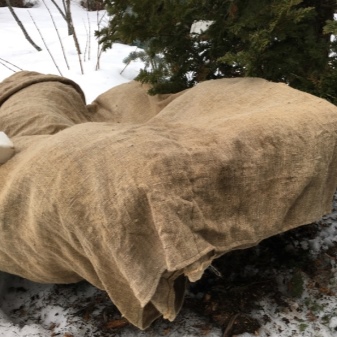
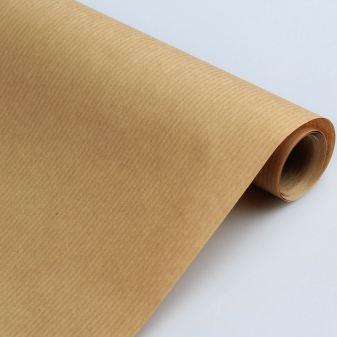
Reproduction methods
Exists there are three ways to breed this juniper variety, namely:
- using cuttings;
- seeds;
- layering.
Cuttings are usually cut in the spring and range in length from 5 to 12 centimeters. Young, but already lignified branches are selected as cuttings. The main thing is that the branches cannot be cut, but must be torn off in order for the heel to remain. After the cutting has been torn off, it is necessary to treat it with a growth stimulant and plant it in a mixture of peat, humus and sand. After the cutting is placed under glass.
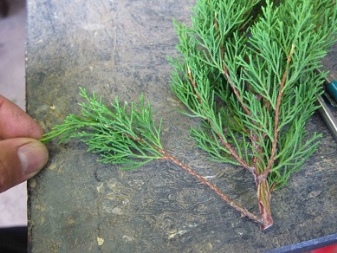
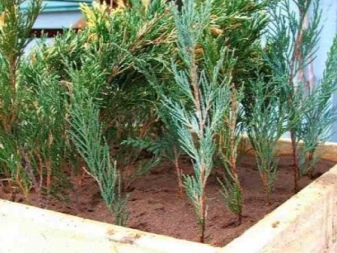
The method of propagation by layering or grafting is used in cases where reproduction of a rare variety of shrubs is necessary. But this method is rarely resorted to, since the juniper has a low survival rate.
Reproduction using the seed method is quite popular. Before planting the seeds, they are treated with cold, and then they sprout after 4 or 5 months. If this procedure is not carried out, then the shrub will rise only after a year. Only after three years can the plant be planted in its permanent place of growth.
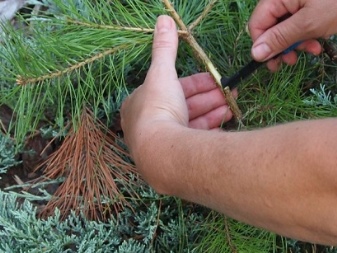
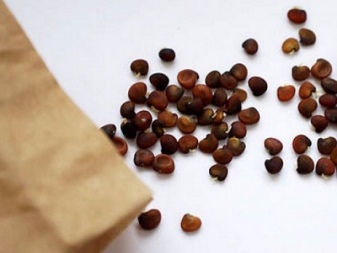
Pests and diseases
Most of all juniper bushes susceptible to fungal diseases, for example:
- fusarium;
- rust;
- rotting roots.
Planting junipers next to apple trees is not recommended, as varieties of fruit trees can cause rust on the shrub. Susceptibility to fungal diseases is associated with rainy and cool weather in summer, excess nitrogen in the soil and the arrangement of shrubs with each other. To understand that the plant is sick, it is enough to pay attention to its appearance, as a rule, it turns yellow, becomes covered with a white bloom, and the needles may fall off.
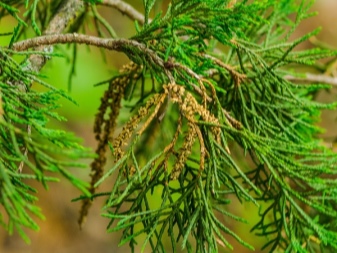
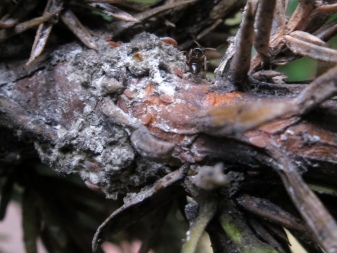
To save the plant, diseased branches are cut and burned, and the cut site is treated with garden pitch. For prevention, shrubs are sprayed with copper sulfate or other fungicides recommended for conifers.
Pests that are dangerous for juniper are:
- aphid;
- spider mite;
- shield.
If you notice signs of pests, the plant needs to be treated with insecticides. If a spider mite was found, then all cobwebs must be removed, since it prevents the penetration of the poison directly to the insects themselves.
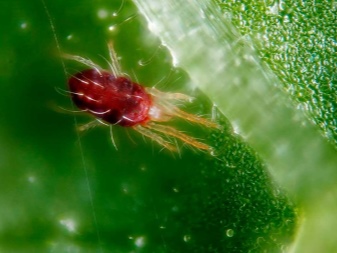

Application in landscape design
Juniper "Hetz" is a frost-resistant crop and does not require constant watering. Due to the bright and attractive color of the plant, it is often used in landscape design, and is widely used for landscaping household plots. Often, the plant is planted in one line to create single-row hedges, for decoration, which is a trend nowadays. In some cases, the plant is planted on the banks of water bodies or to create alleys. Application on home gardens creates the feeling of being in a coniferous forest, which promotes relaxation.
The plant is able to withstand temperatures as low as -34 degrees Celsius. And also this juniper variety is a rather unpretentious plant in terms of care that does not require abundant watering. These properties make it possible to choose this shrub as a decoration both for personal plots and in city parks and squares. And it is also possible to plant it in many climatic conditions, which makes it popular. The plant has a high growth rate, allows you to give various forms to its crown.
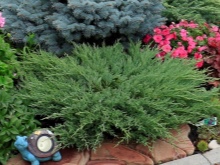
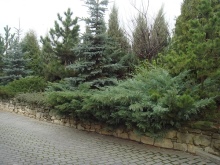
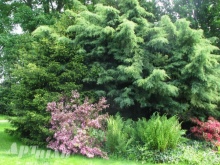
In the next video, you will find a short overview of the Virginia Juniper "Hetz".



































































The comment was sent successfully.